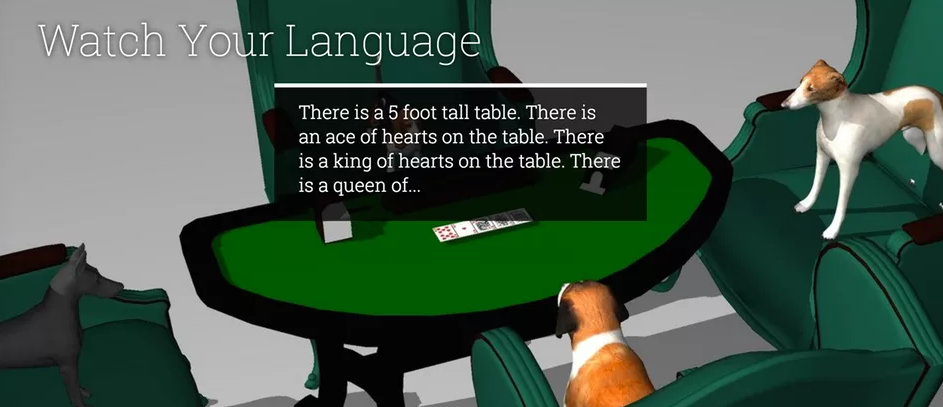WordsEye is a text-to-scene conversion tool that allows users to construct a computer modeled scene through the use of simple text. Users describe an environment, objects, actions and images, and WordsEye parses and conducts a syntactic and semantic analysis of these written statements.
The technology behind it all done with part-of-speech tagging and statistical parsing.The former is simply responsible for ensuring that the words and punctuation marks are assigned in a text to speech. In addition to the pure definition of the word and the context is taken into account. For example, contiguous nouns or adjectives meant.The statistical parsing is an algorithmic method in which a linguistic input is broken, to bring them into a format that the computer can expect. This gives rise to the 3D scene.
Wordseye is in beta stage, we have signed up with the access code and tried out the tool. It’s really impressive and stunning! Check this link to see our picture.
Below images are the tour before you get start using the wordseye.
[metaslider id=2437]
WordsEye How it Works
We have tried out the Wordseye tool. It’s awesome!
You can create serious imagery for projects or prototypes or just use it as a fun tool to share images with friends.Everything you make on WordsEye can be saved to the app’s gallery and shared on social media as well. Below are some examples of the images that have been made using the app.
While colleagues from Columbia University read science fiction books and discuss galactic battles on distant planets, Bob Coyne and Richard Sproat develop the uncanny Wordseye project. The motto of the software is simple: The user has to a scene or a situation in a short text describing and the computer program then uses this input to transform it into a visual representation.
Soon the software should come out as a web application and as an app for Android and iOS. The developers are hoping for a new social media platform, interact with other users in the, by chat, liken pictures and comment.
